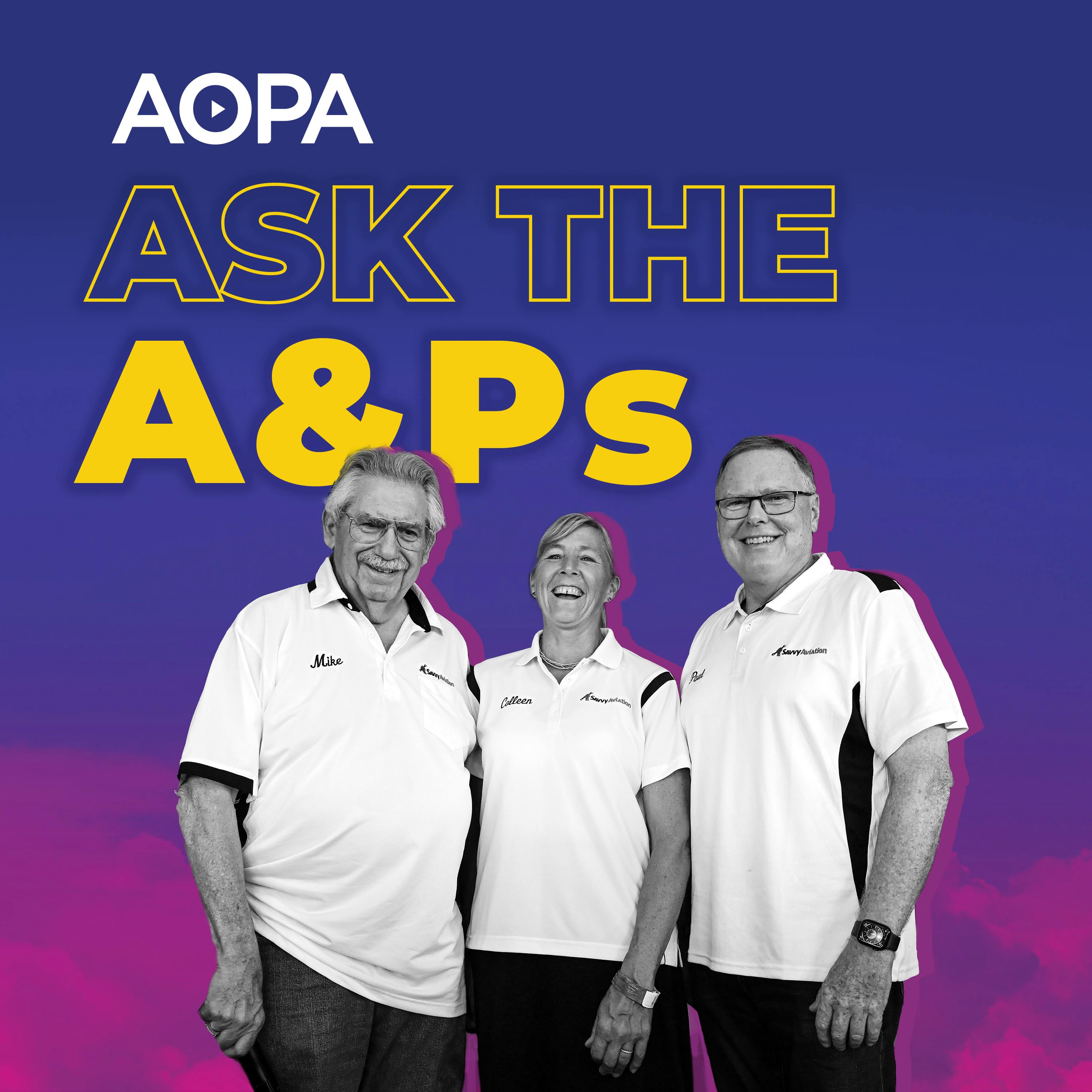I don't have a baby monitor on the engine
Description
This month Mike, Paul, and Colleen take questions from owners with round engines, fabric, fire-breathing aerobats, and more. Send your questions to [email protected] for a chance to get on the show.
Full notes below....
Bruce has an a Continental O-300 and recently replaced all six cylinders. Number four is still running hot, and number six used to run hot. He played with the baffling to reduce the temps on number six, but number four is still around 400 degrees in cruise. He also added a splitter on the top to direct more air. He has checked the induction. By changing the baffling to help cool number six, Mike thinks he has made the problem worse for number four. The plate at the front is there to prevent number six from hogging all the cooling air, he says. When this happens Mike naturally looks at the inter-cylinder baffles, which are easy to mis-position. The first troubleshooting step is to shine a light from below and check if you can see it from above. If so, air can escape and cooling efficiency drops.
Derek is looking to buy a Maule that’s been sitting in a hangar and he’s wondering how to check the condition of the Ceconite fabric. The Ceconite manual has inspection procedures. Colleen said it’s not the fabric you’re necessarily testing, but the dope. If the dope can block UV light then the fabric is presumably fine. If you push against the fabric and it’s pliable and flexible, that’s good. You can find the manual online https://www.conaircraft.com/_files/ugd/d66f5e_9653c858211f4636b7d4fcbb4787e540.pdf
Oscar is wondering if safety wire isn’t meant to hold a torque, why don’t we use the same size for everything? Mike said there are three common sizes of safety wire, but almost everything is .032. Paul mentions that turnbuckles are an important exception. AC43.1B Change 1 https://www.faa.gov/documentLibrary/media/Advisory_Circular/AC_43.13-1B_w-chg1.pdf describes how to safety wire turnbuckles. An interesting and detailed discussion of turnbuckles that has nothing to do with safety wire follows…
Scott has an N3 with a Wright engine and he’s wondering about leaning. The manual for the engine says not to lean, and he asks whether it would be better to leave it full rich or lean a bit. Mike calls for a vote and says that while in cruise he would lean it to the onset of roughness, and enrichen it only enough to smooth out the engine again. Colleen said she loves leaning and would lean as well. Surprisingly, it’s unanimous and Paul said he would lean as well.
Bob has an Extra with a Lycoming IO-580 engine. He has noticed that his old Extra, with the same engine and virtually the same airframe, ran much cooler. He said he can barely lean at all now because of temperature limitations. Number five is the hottest, but only by a little. Paul wonders about his leaning technique, which is to lean slowly to find peak. The guidance is to pull much more quickly. The hosts also focus on a cabin heat shroud that’s in the cowling but not hooked up to the cabin. Bob thinks it partially blocks the exit airflow, which is a critical part of the cowling cooling system.
More Episodes
Published 11/15/24
Lean of peak is causing odd vibrations in a Commander, and the hosts discuss proper troubleshooting. Plus carb heat on the ground, dehydrators, and parts no longer manufactured. Email [email protected] for a chance to get on the show.
Full notes below.
Chip said his mechanic is concerned about...
Published 11/01/24
Rough idle, electronic ignition basics, airplanes to avoid (or not), and the difference between detonation and pre-ignition are on tap for this episode. Email us at [email protected] for a chance to get on the show.
Join the world's largest aviation community at aopa.org/join
Full notes...
Published 10/15/24


